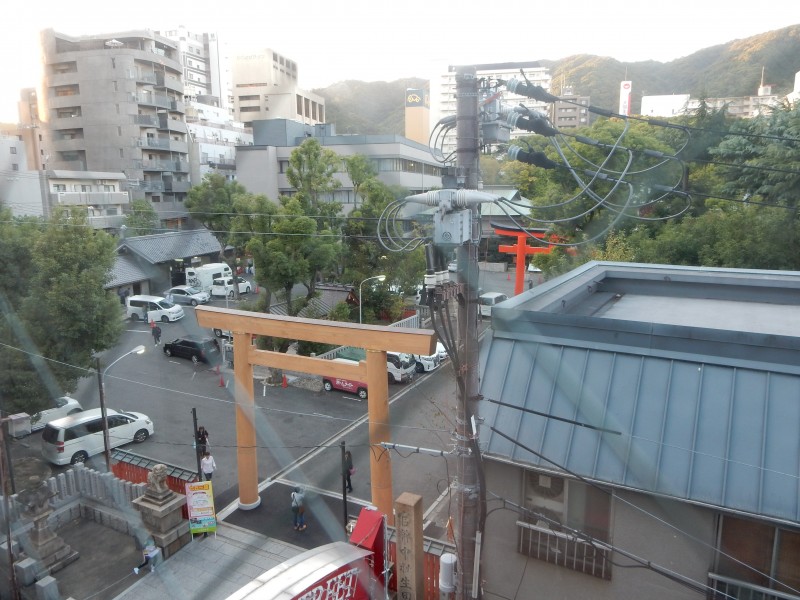
Ikuta Shrine seen from its surrounds hardly seems a centre of nature worship
Last weekend I happened to be in the liveliest part of Kobe, Sannomiya, amidst bustling crowds. It’s noted for its nightlife, with a dense concentration of bars, restaurants, live houses, karaoke and all kinds of other interesting dives. And there right amongst the urban jungle is Ikuta Shrine, relic from another age but still functioning as a well-attended centre of animist and ancestral worship.
The shrine has ancient origins, being mentioned in the Nihon Shoki (720) as a prominent place of worship. Dedicated to Wakahirume no mikoto, a sister of the Sun Goddess, it celebrates giving birth to ‘all that is young, dewy and vital’ in the words of the shrine leaflet.
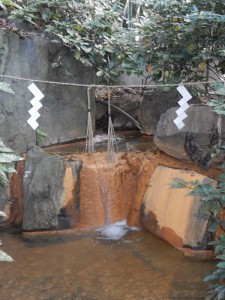
A sacred spring in the small ‘forest’ at the back of the shrine
Of particular interest to me was a notice board celebrating ‘Ikuta Forest’ – now reduced to a small clump of trees at the back of the shrine. According to the Nihon Shoki (720), this was the place that legendary Empress Jingu’s ship became unable to move on her return from invading Korea.
As with many places along the eastern coast, the Korean connections are intriguing for the spread of East Asian beliefs into Japan. Empress Jingu, if indeed she existed, might well have had Korean blood ties and have been practising shamanism.
In 806, according to a noticeboard, 44 kambe (court officials) were sent by Kyoto to serve at this shrine, and it is from this that the name Kobe derives. And in the tenth-century Engishiki it is written that when visitors from the Korean peninsula arrived as state guests, they were offered specially brewed saké in the Ikuta Shrine precincts. (This is thought to be the origins of the Nada brand.)
In the Genpei wars between the Heike and Genji clans, a battle was fought here in 1184, and in 1938 the shrine suffered damage from heavy flooding. Disaster also struck in the bombing of Kobe in 1945 and the Great Hanshin Earthquake of 1995. That it has survived at all is remarkable. That it continues to flourish is testament to the Japanese nurturing of tradition, even in these postmodern global times.
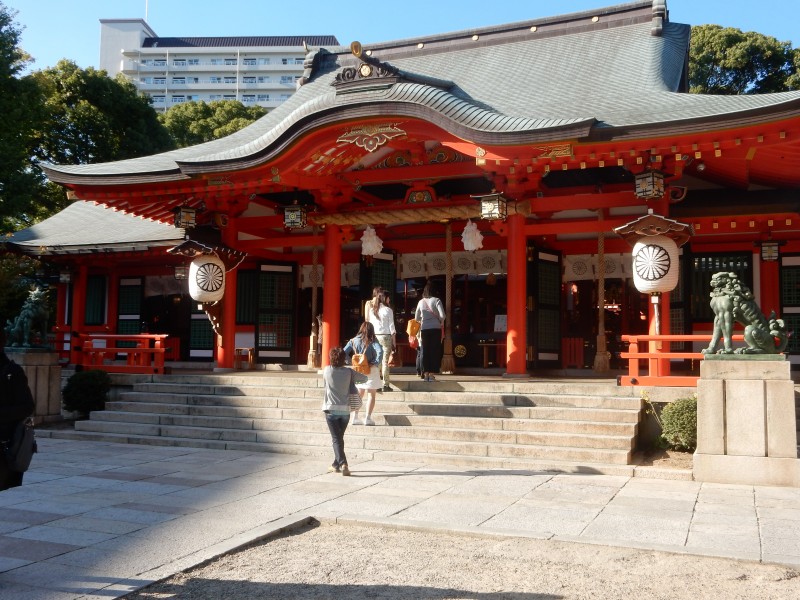
On Sundays a constant stream of visitors pay respects at the Worship Hall
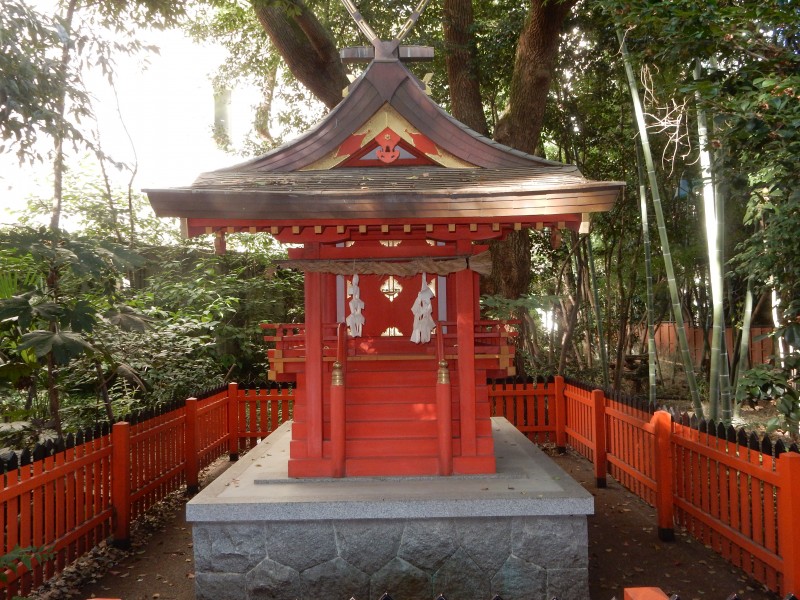
An immaculate subshrine in the Ikuta woods at the back of the shrine
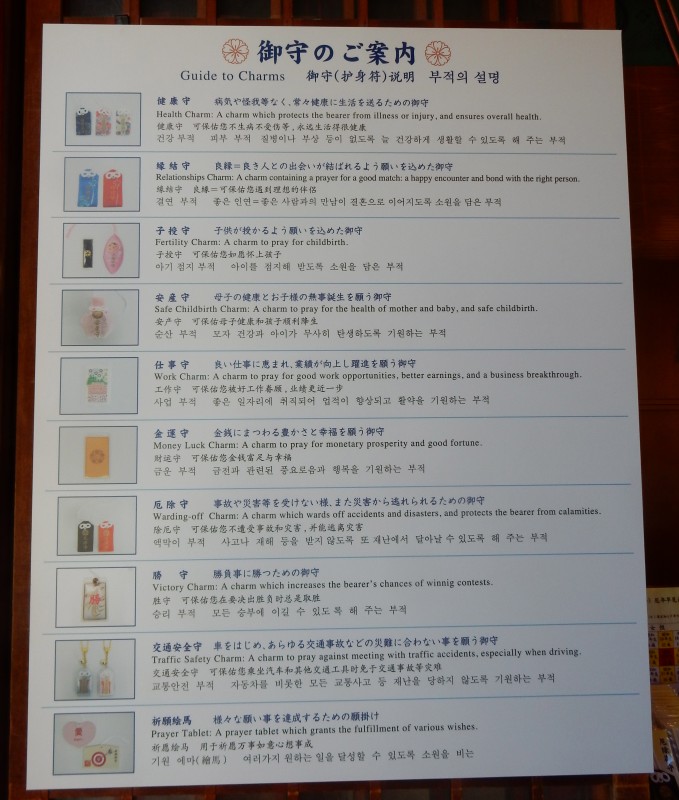
The long list of charms, unusually, has English names, suggesting the shrine has many foreign visitors too
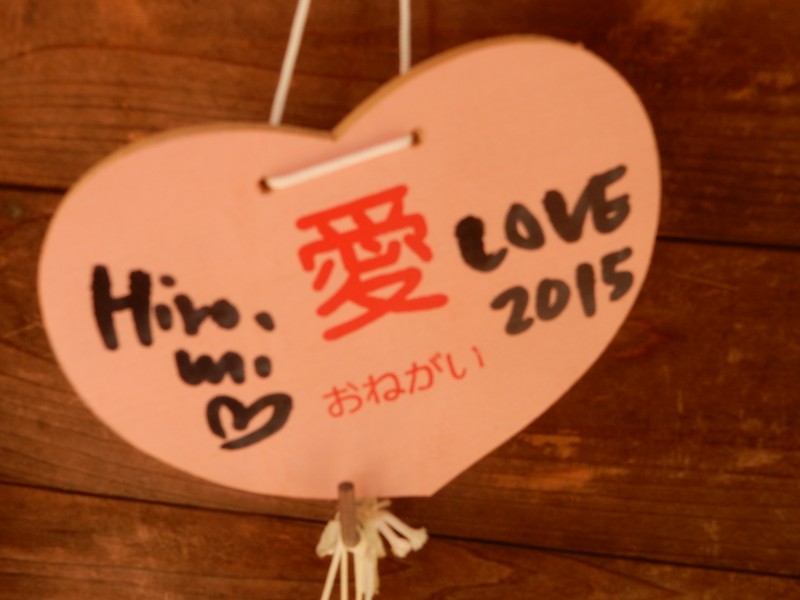
A modern touch to an ancient tradition
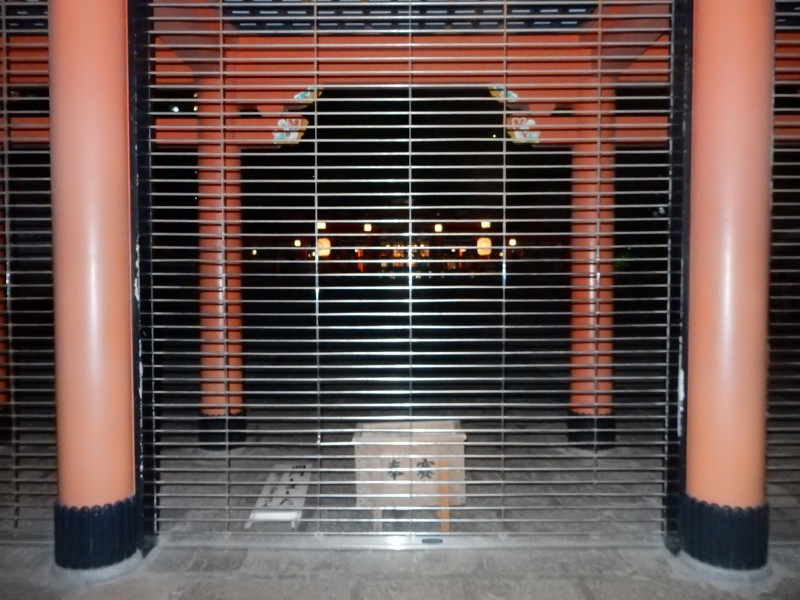
Unusually the shrine is completely locked and shuttered at night, presumably to prevent trouble from the neighbouring drinking area spilling over.

Leave a Reply